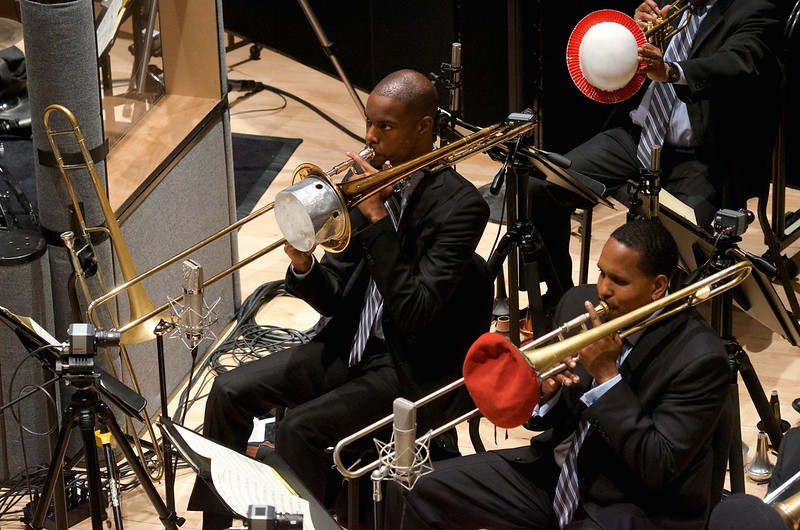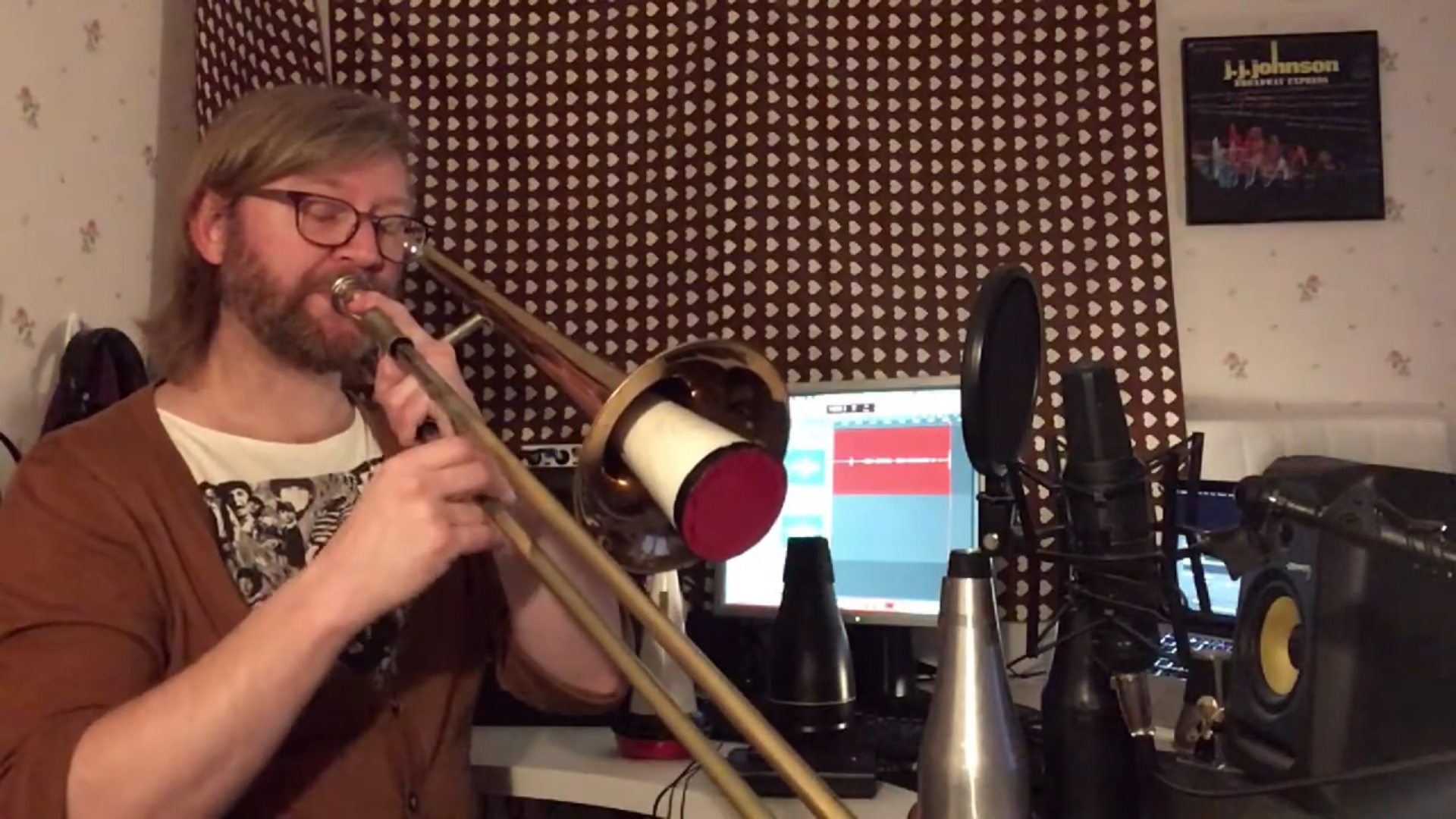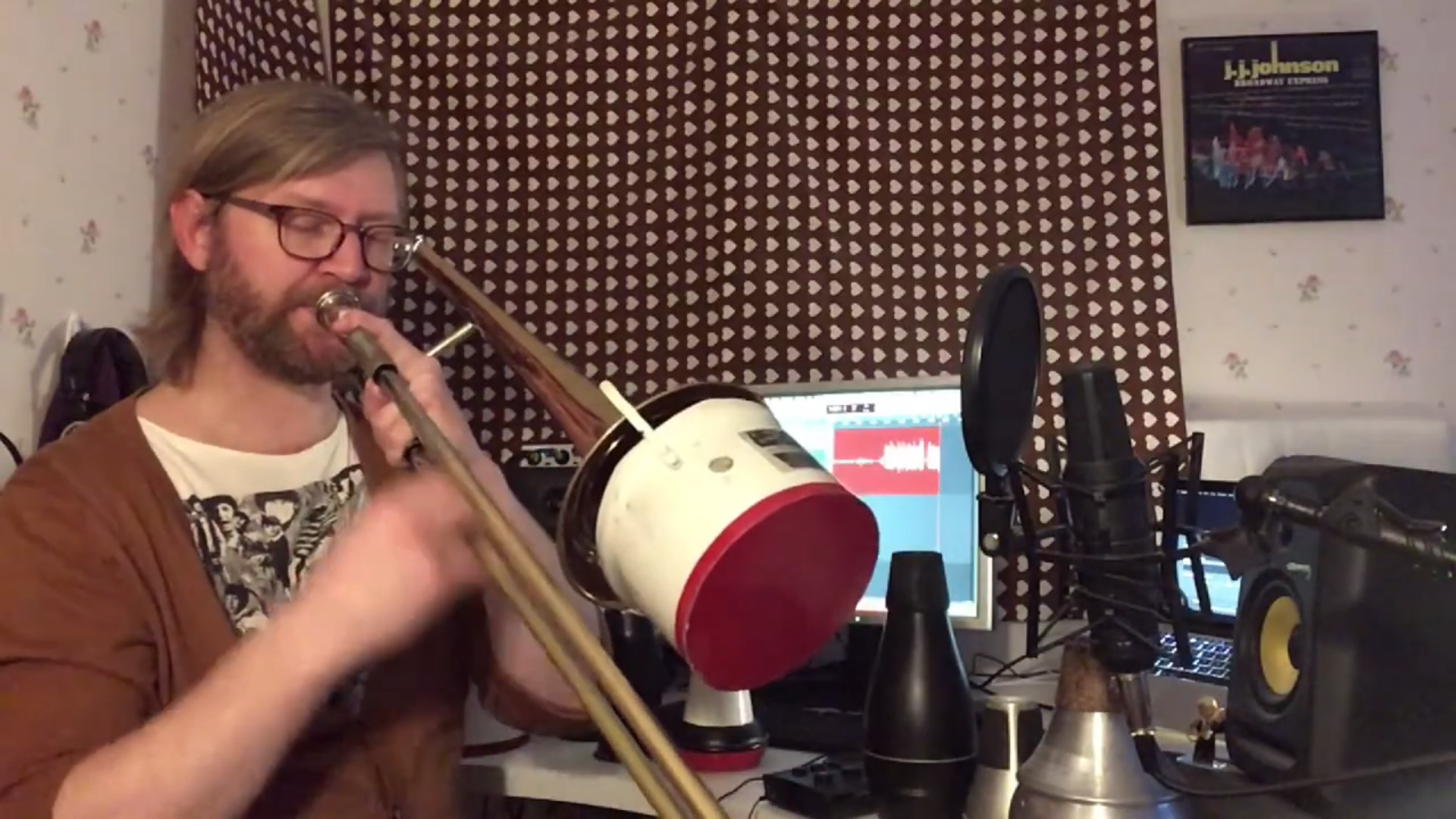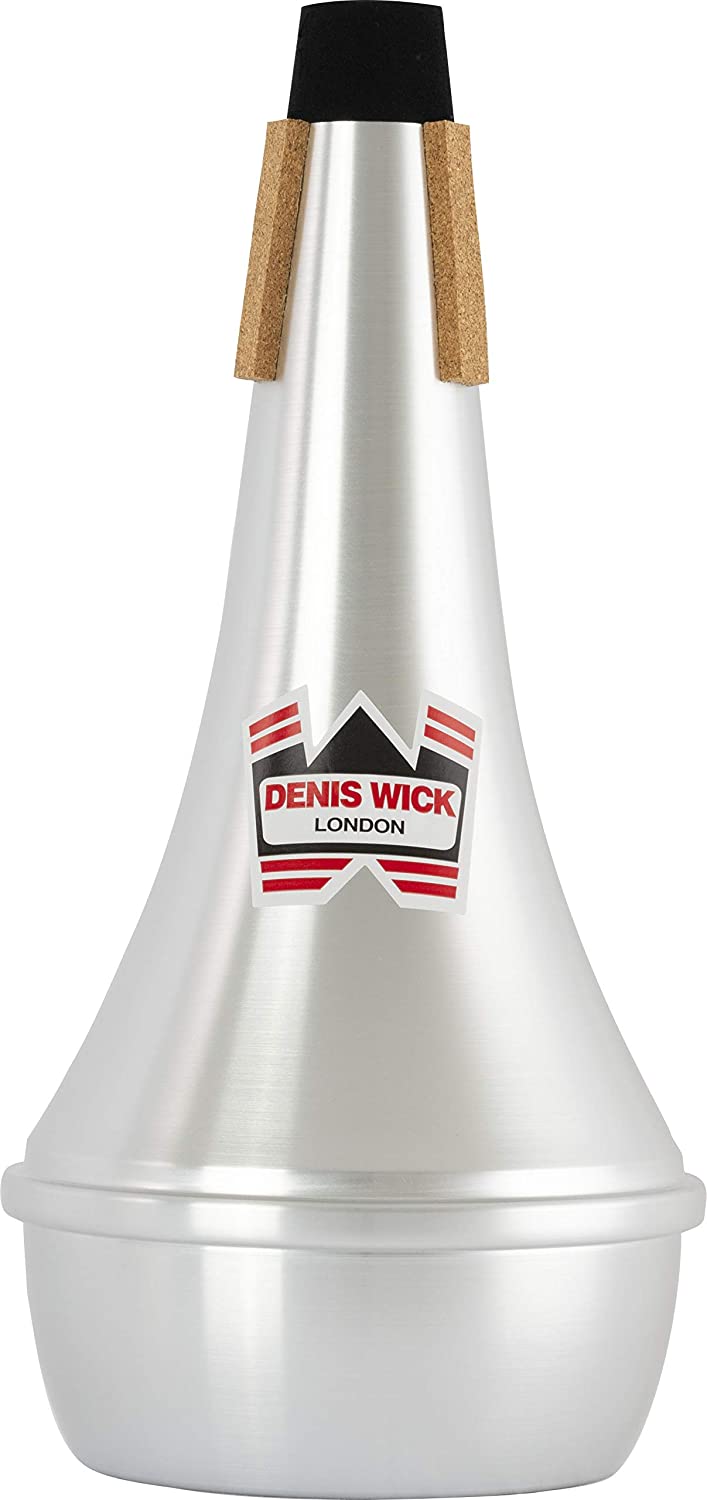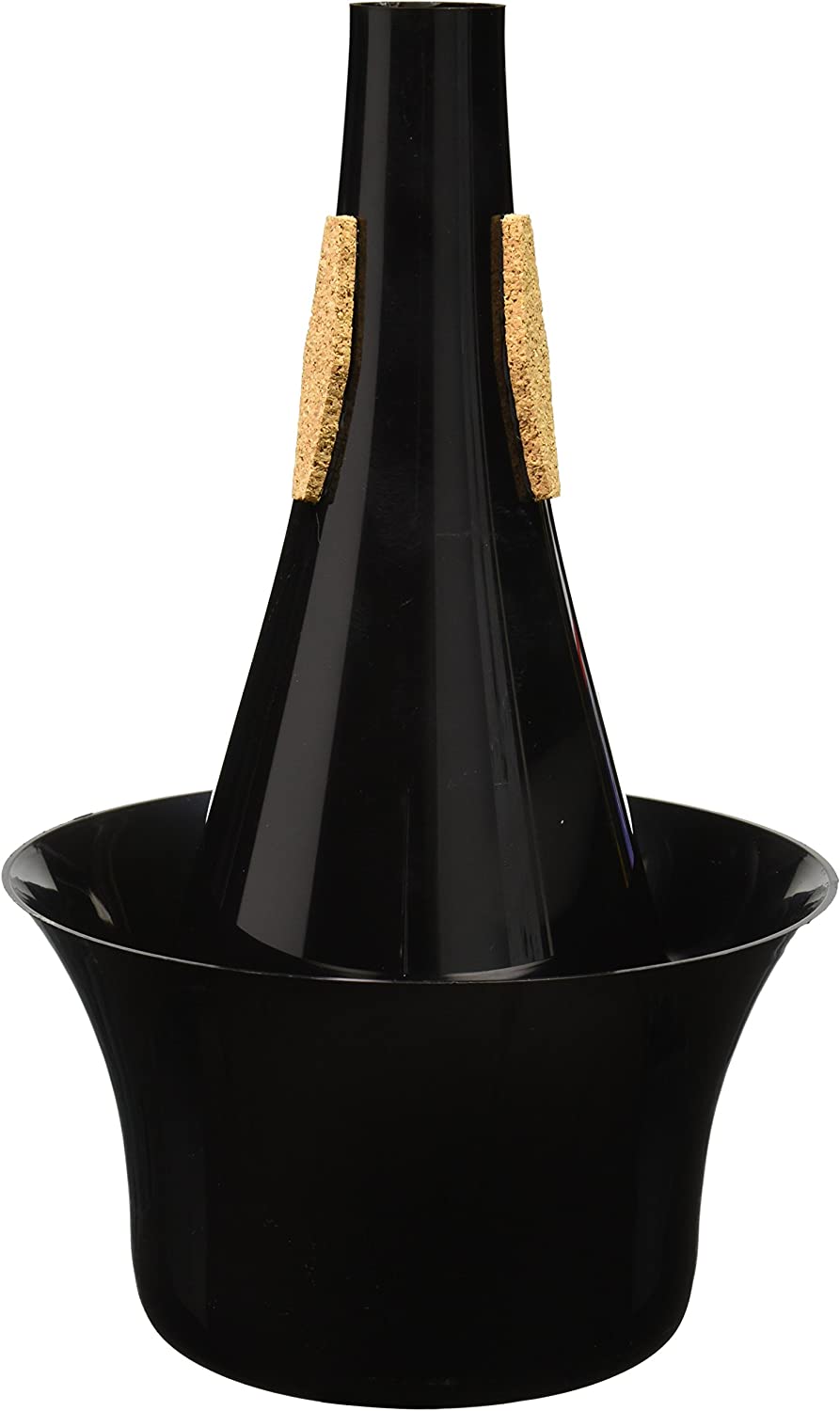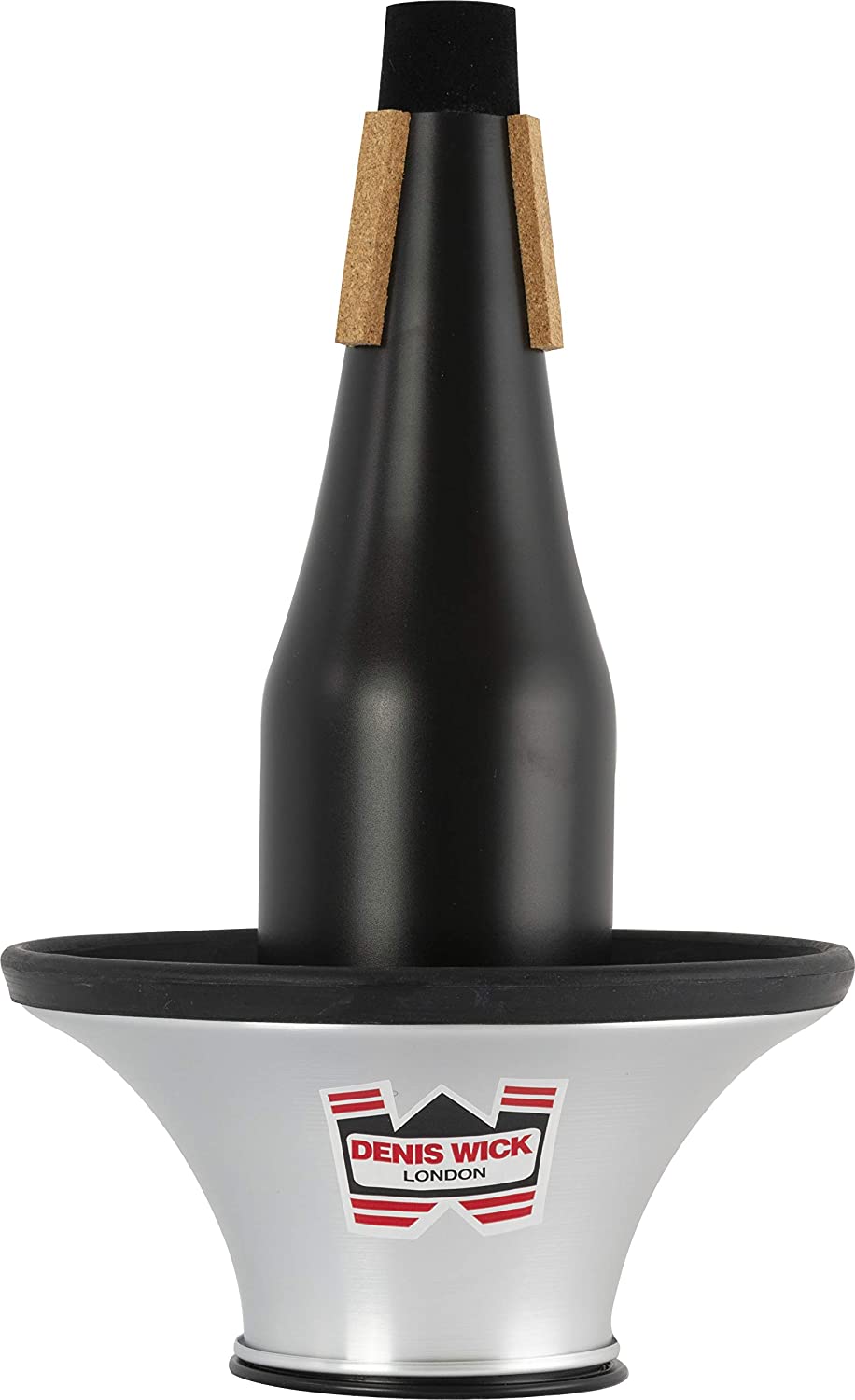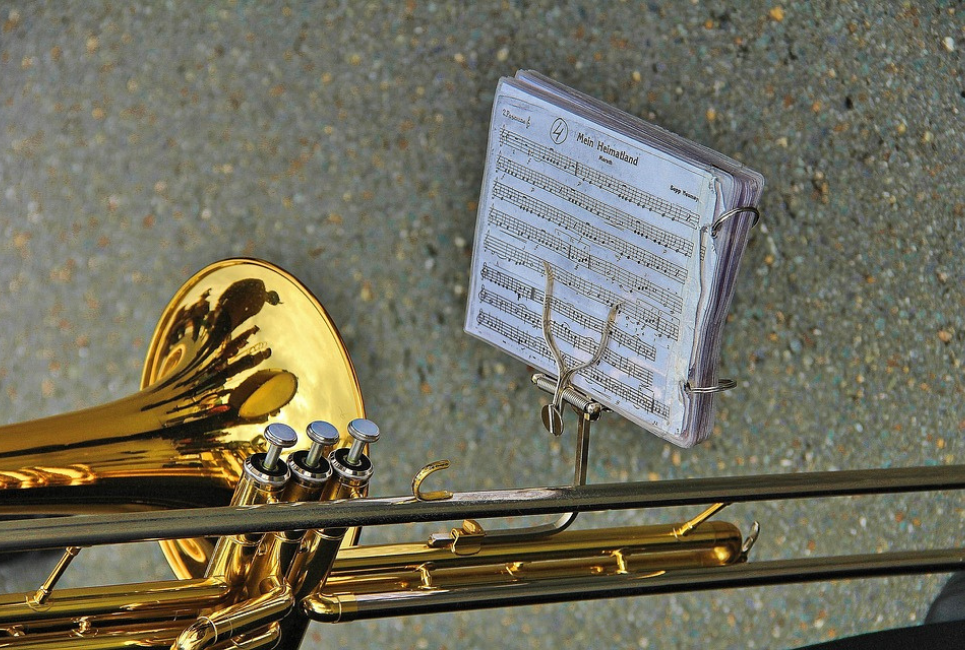- Best Double Bell Euphoniums Guide - September 30, 2022
- How to Find the Best Slide Trumpet - September 30, 2022
- Best Yamaha Euphonium Models Guide - September 26, 2022
Summary: Knowing how to find the best trombone mute means knowing whether you need something to quiet your practice or to change the tone/volume of your sound.
I grew up in a small house in a town full of kids much richer than myself. The same kids I went to school with, went to church with, and studied music with seemed kind of spoiled. Still, I didn’t realize the socio-economic discrepancy until I attended a birthday party where my friend used an internal speaker system built into their home to call her mother from the other wing of the house. I didn’t know houses could have wings. My house barely had rooms.
I say this because they never seemed to have trouble practicing their instruments. After all, they each had a music room where every sibling could practice whatever instrument they took up. On the other hand, I realized far too quickly that my at-home rehearsals were amateur performances for the entire neighborhood when each of my neighbors would see me on the street checking the mail and commenting on my musical skills.
Flush with embarrassment, I told my teacher I didn’t think I could practice at home anymore and was introduced to the mute.
Bottom Line Up Front
Learning how to find the best trombone mute means figuring out why you want a mute. If you are trying to use a trombone mute to practice quietly, Yamaha makes select mutes that are designed specifically for this purpose. If you want a mute that helps you make the most out of changing tones in your sound, look at the Denis Wick line.
When to Use a Trombone Mute
Trombone mutes come in a variety of configurations. Trombone mutes are used to change the volume or the tonal quality of your instrument.
The term “mute” might imply that it makes your instrument completely silent, but that isn’t the case. You can get a mute for your trombone that fits directly into the bell, gets held in place, or is clicked on, depending on how you intend to use it. A trombone mute is used:
- To quiet your tone, or
- To change the tone
For example: If you are reading a piece of sheet music and it says “con sordino,” that means with a mute. Conversely, if you are playing jazz compositions, your sheet music might directly state which mute is supposed to be used for which sections. If there isn’t supposed to be a mute in a particular section, but there is a trombone mute for the rest of it, that section in question might say “open” on your sheet music.
Why Use a Trombone Mute
Trombone mutes can be used at any level.
Beginners
You might consider investing in a trombone mute to quiet your sound if you are a beginner. Beginners are usually practicing at home, and your neighbors will thank you for the minimal investment you make.
Intermediate Musicians
If you are an intermediate musician, you can find something like a straight mute or a cup mute to help you diversify the type of music you can play, especially jazz or classical music that indicates the need for a trombone mute. And of course, at this level, you can still benefit from being able to quietly practice around your house.
Advanced/Professional Musicians
As an advanced musician, higher-quality designs like the Harmon or Plunger mute will give you much more control over the tone and timbre of your music.
Different Trombone Mutes
Knowing how to find the best trombone mute demands understanding the different makes and models.
Straight Mute
The most common is the straight mute. This is likely the first trombone mute you will get. It was my first mute.
It is cone-shaped with a small opening on one end. There are three pieces of cork around the smaller end that help hold it in place in your trombone.
The straight mute is made from plastic, copper, aluminum, or cardboard.
- The aluminum or copper mutes are better for a brighter jazz sound.
- The plastic mutes quiet your tone.
- The cardboard mutes muffle the timbre.
If you are a beginner, invest in this first. It should be a part of your band or orchestra toolkit.
I recommend the Denis Wick for a straight mute (you’ll find that Denis Wick is one of the most highly rated for all brass mutes, and for a good reason).
Cup Mute
The cup mute has a cup shape on one end. They’re usually made from cardboard or aluminum, and you stick them directly into the bell of your trombone so that air can only get around along the edges of the cup and not the entire bell. Cup mutes will muffle and quiet your tone a lot more than a straight mute.
For this reason, they are the second most popular among musicians, especially for practicing at home.
Harmon Mute
The Harmon mute is made from aluminum. Unlike the others, it has two pieces. The first is the small stem, which goes inside the second, a round bulb piece. You can play it with the stem inside or chuck it over your shoulder and play with the bulb piece alone.
Note: If you are reading sheet music that requires a Harmon mute, it will specifically state it. You won’t have to guess.
The harmon mute is also called the “wah-wah” mute because the classic trombone sound that plays in films when someone makes a mistake is generated by this mute.
You can listen to it here:
Plunger Mutes
A plunger mute might sound really fancy, but it’s actually just a bathroom plunger. Please, don’t run off and grab the one on the side of your toilet; if you don’t have any money to spend, buy a new bathroom plunger and use that.
I’m not kidding. If your music calls for a plunger mute, just head to the hardware store or, better yet, the dollar store.
Tip: If you read “+” on your sheet music, and it calls for a plunger mute, that means you should partly cover your trombone bell. If your sheet music says “O,” that means partly uncover your bell by pulling the plunger section away from one side.
Bucket Mutes
Bucket mutes muffle the trombone sounds most severely. A bucket mute is any round, bucket-shaped mute. The other mutes on this list have a softer edge, whereas the bucket mute looks just like a bucket. This usually clips to the outside of your bail, but you can find some models that you insert. If you purchase a clip-on, you have to ensure that it matches your trombone bell’s diameter precisely.
But don’t worry, I’ve never seen sheet music that called for a bucket mute, so it’s unlikely you’ll run across that need any time soon.
Practice/Silent Mutes
If you see a mute (like the Yamaha Silent) that’s labeled as practice or silent, it is not something you will use when you perform. It is meant to reduce the sound your instrument makes when rehearsing at home. Some models muffle the sound, and others cut it off completely and transfer it to a set of headphones that you can hear but no one else can.
Top Brands for Trombone Mute
There are a few top brands, no matter your musical skill level. I’ve included three of my favorites, all of which have a handful of different trombone mutes, so you can pick the size and shape you want based on your instrument and your musical skill.
Yamaha
I like Yamaha because they have a silent mute. They make inexpensive varieties and specialize in student practice mutes, so if you need to keep everything quiet while you play at home, they are a reliable option.
Bach
Bach makes trombones, and they make trombone accessories like mutes. They are one of the most popular brands because they have a seamless fit no matter which type of trombone you are using. One of the biggest customer complaints when buying other manufacturers is that the companies only make one size, so only people with a basic tenor trombone can use the mutes, but anyone who has an alto or a bass trombone is out of luck. That’s not the case with Bach.
I like that they offer different materials because, as I mentioned, the material used to construct your trombone mute directly impacts the sound quality, so you shouldn’t be stuck with the brasier, warmer tone of an aluminum mute if that’s not what you want.
Denis Wick
Now, my absolute favorite is Denis Wick. Denis Wick is particularly popular among more professional musicians because each of the mutes they produce is handcrafted, not mass-produced, and they use higher quality materials which directly equates to higher quality sound. Denis Wick is more expensive but consider it a long-term investment.
Best Trombone Mutes
The following are some of my favorite trombone mutes.
Denis Wick DW5505
The Denis Wick DW5505 Straight Mute is handmade from aluminum. Even though it’s small and weighs only a few ounces, handle it with care. I dropped mine two weeks after I first bought it, and it cracked the bottom plastic bit. I had to fix it with super glue because I couldn’t buy another one (but the superglue worked fine).
Pros
- You can get a brass, copper, or aluminum bottom, depending on your desired sound quality.
- It works on tenor trombones.
- Your sound will be dramatically quieter, so it’s perfect if you need an almost silent rehearsal at home.
Cons
- The bell size on a bass trombone is too big for this model.
Yamaha Silent Mute
If you are at home and need to make your rehearsal absolutely silent, then Yamaha is perfect. The Yamaha silent trombone mute is uniquely designed with a built-in sound system, as it were, so you can hear yourself, but no one else can.
I know it is expensive. I do. I got very lucky when I went to college and had a few hundred dollars in scholarship money left over. I used it on a silent mute so that I could practice anytime, anywhere.
The music school on campus had practice rooms, and they were luxurious, but it was also a pain to find time to go all the way to the other end of campus (the music building was completely opposite from my dorm), let alone to get a few extra minutes of practice in while other students stood outside (impatiently) waiting. So, if you have the money or you can convince someone else to invest in this as a gift (hello, grandparents), it’s completely worth it.
Pros
- This mute works on large bore trombones and fits into the bell bass trombones, which means it’s much more widely applicable than some of the other beginner models.
- You get 100% silent rehearsals that no one else can hear.
Cons
- It is expensive.
- You can’t use this to modify the sound or timbre when you perform or play with a group.
Bach 1863 Cup Mute
You might also consider the Bach 1863 Cup Mute. Yes, this trombone mute is made of plastic, and a lot of people hesitate to invest in a plastic mute. However, it’s not cheap plastic; it’s very durable plastic. You also wouldn’t know that it’s made from plastic when you give it a quick glance because it has a beautiful black color.
I like the idea of plastic not just because it’s cheaper, which is something I always look for for beginners, but because it doesn’t weigh as much, so it doesn’t add extra weight to your instrument at that delicate stage when you are just learning how to physically handle your trombone and use your breathing properly.
Pros
- It is an inexpensive mute, perfect for beginners.
Cons
- It is plastic which means you should look out for some of those sharp plastic seams.
Denis Wick DW5529 Cup Mute
Yes, I’m recommending the Denis Wick line once more. Why? One of the things I’ve struggled with the most when using a mute is the back pressure. The more advanced the mute, the more pressure you will feel. It’s basically working to resist your airflow, so you’ll get tired much faster. At least, that’s been my experience with other models.
But that isn’t my experience with Denis Wick. You won’t have to overblow in order to hear yourself as you practice.
It is made with aluminum and PVC edges. Just like the other models in this line, it’s hand-spun, so you don’t have as many flaws or issues as you would from something mass-produced. The size is much larger and shorter, almost like an upside-down doggy food bowl and that extra large cup gives you a much warmer sound perfect for jazz music.
Pros
- It has an extra large cup that gives more dramatic shifts in tone.
- You can use it for avant-garde or jazz music.
- It keeps your pitch and tone stable.
Cons
- It is not intended for beginners
FAQ
Question: What trombone mute should I get?
Answer: This is up to you. As I mentioned, trombone mutes can change your sound, or they can muffle it. Once you figure out what kind of sound changes you want or volume changes, the more important factor is going to be making sure it’s the right size. All manufacturers will stipulate the type of trombone for which each mute is designed. If it doesn’t specifically list your type of trombone, don’t hesitate to ask the manufacturer.
Question: What is the best practice mute?
Answer: I recommend the Yamaha Silent trombone mute. If you are practicing, you probably want to keep as quiet as possible so that you don’t bother your neighbors, your roommates, or your parents. A silent mute gives you the chance to practice anywhere. If it’s a beautiful day, you can take your instrument down to the park and practice without disturbing the birds. You can sit in the comfort of your living room and practice while your partner watches TV right next to you.
Question: Is it harder to play the trombone with a mute?
Answer: When you use a mute on your trombone, it provides slight back pressure. So, as you play, you will notice it feels a little different. However, it isn’t necessarily something that makes it more difficult to play the trombone; it is something you have to learn to get comfortable with the same as any other accessory.
Bottom Line
Learning different trombone mutes makes it easier to figure out how to find the best trombone mute for your situation. You might need something that makes your brass instrument quieter or something that changes the tone you produce. Go with Yamaha if you want something silent for practice, but consider Denis Wick if you want more variation in your tone and timbre.
Looking for more interesting readings? Check out:


